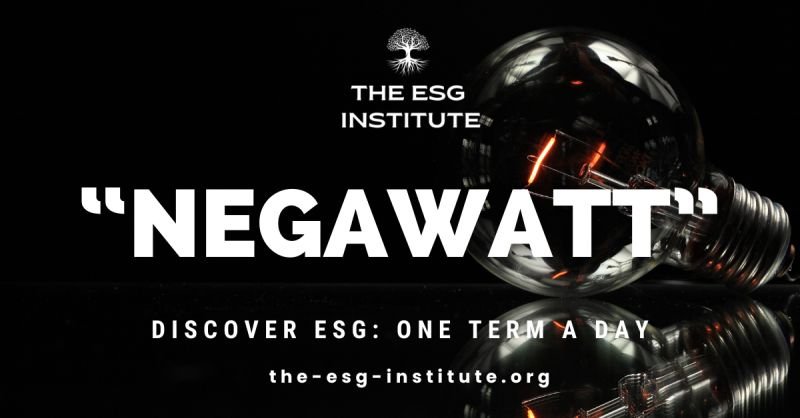What is Negawatt
At The ESG Institute, we believe that advancing sustainability starts with understanding the language that shapes it. Our "ESG Terms" series breaks down complex, often overlooked concepts in sustainability and Environmental, Social, and Governance (ESG) reporting—so you can stay informed, inspired, and one step ahead in your journey toward responsible business.
What is Negawatt?
🔺 Negawatts represent the energy saved through efficiency measures, rather than energy generated. The concept, coined by Amory Lovins, shifts the focus from producing more energy to reducing waste—because the greenest watt is the one you never have to generate.
🔺 Why It Matters: Reducing energy consumption through efficiency measures is often cheaper and more sustainablethan building new power plants. Investing in Negawatts helps businesses lower costs, reduce emissions, and ease pressure on the energy grid.
🔺 Example: When a company upgrades to LED lighting, installs smart HVAC systems, or optimizes industrial processes, they effectively generate Negawatts—saving energy that would have otherwise been consumed. Entire cities and industries are now incentivizing Negawatts through energy efficiency programs.
🔺 Did You Know?: According to the International Energy Agency (IEA), energy efficiency improvements could provide more than 40% of the reduction in energy-related greenhouse gas emissions over the next 20 years, making it a cornerstone of efforts to mitigate climate change.
🚀 Follow The ESG Institute today for expert insights, news, and training in sustainability.
The ESG Institute helps your business or organization adopt and integrate Environment, Social, and Governance principles into your core practices, by offering clear guidance and delivering the best market tools and products directly to you., reach out to us today.

